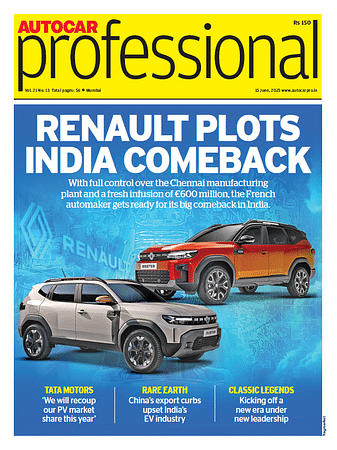Experts at SIAM safety webinar urge standardisation of ABS, EBD, airbags, TCS and LDW
SIAM’s seventh lecture on ‘Safety Features of PVs’ sees consensus for standardisation of Anti-Lock Braking Systems, Electronic Brake Force Distribution, Airbags, Traction Control System and Lane Departure Warning systems.
The Society of Indian Automobile Manufacturers (SIAM) conducted its seventh lecture, on the ‘Safety Features of Passenger Vehicles’, today. With growing safety consciousness amongst vehicle buyers, who are keen to have life-saving technologies and kit as standard equipment, a number of OEMs will have to rethink their strategies, particularly when it comes to offering safety kit.
The SIAM panel comprised industry veterans including Dr Tapan Sahoo (Chairman, SIAM International Harmonization Group & Executive Vice President, Maruti Suzuki India), Ramashankar Pandey (Managing Director, Hella India Lighting), Anil Kumar (Co-Chairman, SIAM International Harmonization Group & Sr. General Manager- Body & Trim Cars, Tata Motors), Dr Sitarameswara Sarma Akella (Vice President, Mahindra & Mahindra), Kartikeya Joshi (CEO, Minda iConnect), and Prashant K Banerjee (Executive Director, SIAM).
The lecture emphasised on creating a sustainable road safety roadmap through technological breakthroughs and policy implementation. The webinar also stressed upon adopting global best practices in a localised manner to make roads safer.
According to Prashant K Banerjee (Executive Director, SIAM), "Despite legislating several vehicular and road safety best-practices, India registers about 500,000 road accidents annually – one of the highest in the world. Although passenger vehicles today adhere to best safety norms and have ultra-modern safety features installed, there is a dire lack of holistic enforcement procedures, a level-playing field and awareness amongst consumers regarding safer mobility. We, at SIAM, have been working towards establishing a platform where industry players can come together and find viable solutions to road safety concerns that are impacting one and all. The Government intervention through regulation complimented by public participation holds the key for road safety”.
While laying an outline of the world markets with respect to global safety standards for passenger vehicles alongside India's accomplishments, the lecture highlighted the importance of developing new features and regulations to reduce the constantly rising fatality rate in the country.
The thought-provoking sessions included discussions focussed on what other safety best-practices can be actualised and the sorts of mechanical progressions and intercessions that can be started to tackle the unabating concern pertaining to road safety.
All members consensually agreed that Indian road infrastructure needs to be improved in addition to standardisation of features like Anti-Lock Braking Systems (ABS), Electronic Brake Force Distribution (EBD), Airbags, Traction Control System (TCS) and Lane Departure Warning Systems (LDW).
RELATED ARTICLES
VinFast’s second plant in Vietnam goes on stream ahead of India factory
Vietnamese EV maker’s second plant in its home market, which has a 200,000 EVs-per-annum capacity, will focus on produci...
Continental exits TBR market in India, shifts focus to car and SUV radials
German tyre manufacturer aims to tap the double-digit market growth opportunity for big SUV and luxury car tyres which w...
New ZF SELECT e-drive platform gives EV makers a choice in 100 to 300 kW range
Modular e-drive platform optimally matches 800-volt overall system and components such as the electric motor and power e...





 By Autocar Professional Bureau
By Autocar Professional Bureau
 04 Dec 2020
04 Dec 2020
 6206 Views
6206 Views









